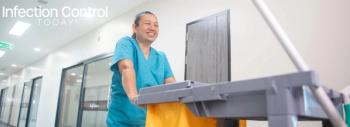
Antibiotic Resistance in the Environment Linked to Fecal Pollution
Increased levels of antibiotic resistant bacteria in the environment may have different causes. It could be a consequence of on-site selection from antibiotic residues in the environment, hence promoting the evolution of new forms of resistance. Alternatively, it is simply due contamination by fecal bacteria that often tend to be more resistant than other bacteria. Understanding which explanation is correct is fundamental to manage risks.
A study published in Nature Communications shows that "crAssphage," a virus specific to bacteria in human feces, is highly correlated to the abundance of antibiotic resistance genes in environmental samples. This indicates that fecal pollution can largely explain the increase in resistant bacteria often found in human-impacted environments. There was, however, one clear exception where resistance genes were very common also without the presence of the phage -- environments polluted with high levels of antibiotics from manufacturing.
Joakim Larsson, professor in environmental pharmacology at Sahlgrenska Academy, University of Gothenburg, and one of the co-authors, notes, "These finding are important as they can inform management of human health risks associated with antibiotic resistant bacteria in the environment. While antibiotic residues is clearly the cause for the exceptionally high levels of resistance found near some manufacturing sites, fecal pollution is probably the explanation in most other places."
One may wonder if this means that we do not need to care about the low levels of antibiotics released from e.g. sewage treatment plants world-wide. Larsson comments "The study indicates the importance of taking into account the level of fecal pollution when interpreting findings of antibiotic resistance in the environment. It implicates that one often do not need to explain such findings by on-site selection from residual antibiotics. But it does not exclude that there still is selection by low levels of antibiotics in the environment going in in parallel. Other findings still suggest that low, environmental levels of certain antibiotics could select for resistance. This needs further research."
Source: University of Gothenburg
Newsletter
Stay prepared and protected with Infection Control Today's newsletter, delivering essential updates, best practices, and expert insights for infection preventionists.






